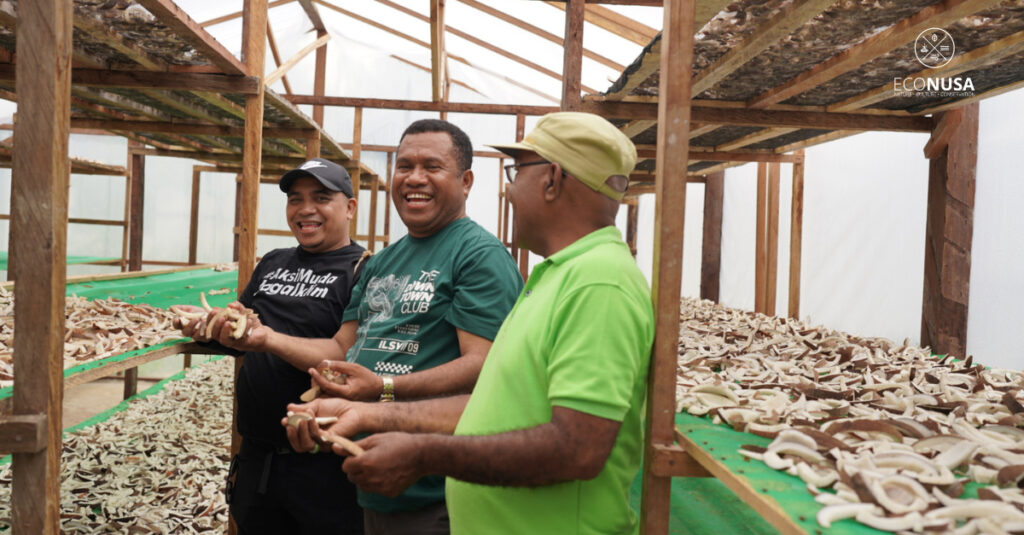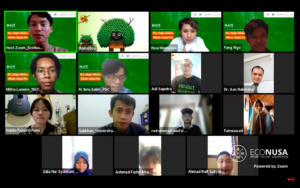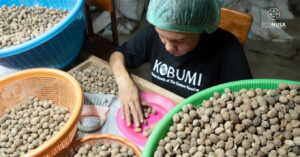
Pai Island, part of the Aimando Padaido Classis region, is known as one of the coconut centers in Papua’s coastal zone. People here have long processed coconuts into copra, but only recently has production become more organized.
Most of the copra is now dried and packed in sacks, although some is still sold raw. The management of copra sales revenue has been entrusted to the younger generation, with four active workers and plans to hire two more.
According to Reverend Jhon Baransano of GKI Aimando Padaido Classis, several challenges remain, especially the unreliable weather, which makes drying difficult. Currently, residents rely on just three drying racks, which is far from adequate. Improved drying infrastructure is urgently needed to increase production efficiency.
Economically, the selling price of raw copra is about Rp 5,000 per kilogram. Farmers sell it in Bosnik, Biak Numfor Regency, about 25 kilometers away by sea. But after deducting transport costs, profits are very low, sometimes only Rp 10,000 for two sacks of copra. To cope, the community has begun a barter system, exchanging coconuts or copra for daily necessities at the church service post. This initiative has helped reduce dependence on trips to town just to get essentials.
Interestingly, this shift is already producing visible results. Village shop revenues, which were previously around Rp 150,000 per day, have surged to Rp 800,000, an increase of more than 400%. This means more money is circulating within the local economy.
Yamnaisu: Sustaining Wisdom, Rising with Copra
Yamnaisu Village, in Aruri Islands District, Supiori Regency, also holds significant potential in the copra sector. Home to about 170 households and 600 people, around 70% of the population depends on copra, with the rest relying on fishing.
The village has basic facilities like a community health post and a village-owned business unit. However, the geography presents a challenge—rising sea levels, which occur several times a year, affect agricultural processing, including coconut production.
Also Read: Nabire Coconuts: A High-Value Commodity from the Coastal Areas of Papua
Nevertheless, Yamnaisu continues to uphold traditional wisdom through sasi, a customary law that restricts natural resource use. After the sasi period ends, harvests are shared equally. This not only protects nature but also strengthens community solidarity.
Copra here is sold to middlemen at around Rp 8,000 per kilogram. While higher prices—Rp 10,000 to Rp 12,000—are available in Biak, transport access remains limited. Villagers currently rely on private or group-owned vehicles to transport their goods.
Shared Challenges, Shared Hopes
Both Pai Island and Yamnaisu face similar challenges:
- Limited drying facilities for copra
- Low selling prices at the farmer level
- Transportation and market access difficulties
- Lack of training to improve copra quality and value
But behind these obstacles, a collective spirit continues to grow. In Pai Island, groups like the Persatuan Kaum Bapa (PKB) Yahwe Pai help manage copra revenues, using the funds to support church and social programs. In Yamnaisu, the local church has made copra development an economic priority.
With the right support—from government, churches, and the private sector—copra can become a key driver of coastal community welfare. What’s needed isn’t just access to markets or equipment, but trust and commitment to building the economy from the ground up.
Looking Ahead: Copra as a Local Strength
Copra may seem humble, but in Pai Island and Yamnaisu, it holds deep meaning. In the hands of resilient and eager communities, copra is no longer just a crop, but a path toward a more independent and prosperous future. The EcoNusa Foundation, in collaboration with GKI Aimando Padaido Classis, is purchasing copra, including from Pai and Yamnaisu, with the hope of improving community welfare.
With collaboration, local innovation, and proper guidance, there’s real potential for these two regions to become success stories in local resource-based economic development in Papua.




